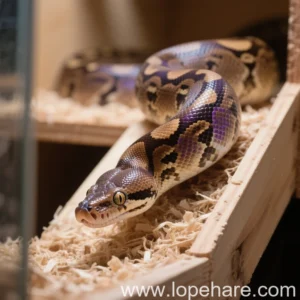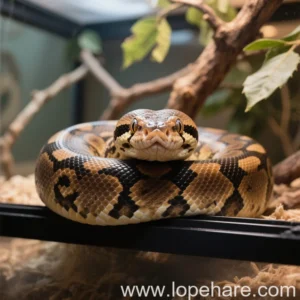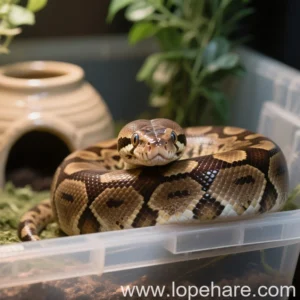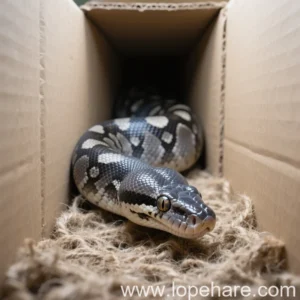Reptile Husbandry
Ball Python Feeding Schedule: What to Feed and When for Juveniles vs Adults
Hey there, fellow exotic pet enthusiasts! Here at lopehare.com, we’re passionate about helping you provide the best care for your unique companions. Among the most popular pet snakes, the Ball Python (Python regius) stands out due to its docile nature and manageable size. However, ensuring their long-term health requires attention to detail, especially when it comes to their diet. A common question we receive is about feeding: how often to feed juvenile ball python and how does that change as they grow? Getting the feeding schedule and prey size right is absolutely crucial.
Why Feeding Schedules Matter
Establishing and sticking to a consistent feeding schedule for your Ball Python isn’t just about convenience; it’s vital for their health and development. Unlike some other pets, snakes have slow metabolisms and improper feeding can quickly lead to problems:
- Preventing Obesity: Overfeeding can lead to fatty liver disease and other serious health issues.
- Supporting Growth: Juvenile snakes need consistent nutrition for proper growth and development.
- Mimicking Natural Rhythms: While captive life differs, understanding their natural feeding patterns helps us provide better care.
- Digestive Health: Proper spacing between meals allows for complete digestion, preventing regurgitation or other digestive upset. Ball Pythons require specific temperatures to digest properly; providing food when temperatures are too low can be detrimental.
What to Feed Ball Pythons
In the wild, Ball Pythons primarily feed on rodents and small birds. In captivity, the staple diet consists of rodents, most commonly mice and rats. For pet Ball Pythons, we strongly recommend feeding pre-killed, frozen/thawed prey. This eliminates the risk of the prey item injuring your snake during feeding, which live prey can easily do.
The key is selecting the appropriate feeder size for adult ball python and juveniles. The prey item should generally be no wider than the widest part of your snake’s body. Feeding prey that is too large can cause stress, regurgitation, or impaction. Feeding prey that is too small means you’d have to feed more often, which can also stress the snake.
Feeding Juvenile Ball Pythons
Juvenile Ball Pythons are growing rapidly and require more frequent meals than adults. Consistency helps them thrive. When discussing how often to feed juvenile ball python, we’re typically looking at a weekly schedule.
Here’s a general guideline, but always observe your snake’s body condition and adjust as needed:

| Age/Size | Feeding Frequency | Prey Size (Approx.) |
|---|---|---|
| Hatchling (until ~100g) | Every 5-7 days | Pinky or Fuzzy Mouse (or equivalent rat size) |
| Young Juvenile (~100-250g) | Every 7 days | Hopper Mouse / Weanling Rat (or equivalent) |
| Older Juvenile (~250-500g) | Every 7-10 days | Adult Mouse / Pup Rat (or equivalent) |
Monitor their weight and body shape. A healthy juvenile should look like a rounded triangle in cross-section, not overly skinny or bulging from being overweight.
Feeding Adult Ball Pythons
Once your Ball Python reaches adulthood (typically around 2-3 years old and over 500g, sometimes up to 1000g+ depending on sex), their growth slows significantly, and so does their metabolic rate. They do not need to eat as often as juveniles.
Adults are often transitioned to rats as their primary food source due to their larger size and better nutritional content compared to multiple mice. Determining the appropriate feeder size for adult ball python is key to preventing obesity while providing sufficient nutrition.
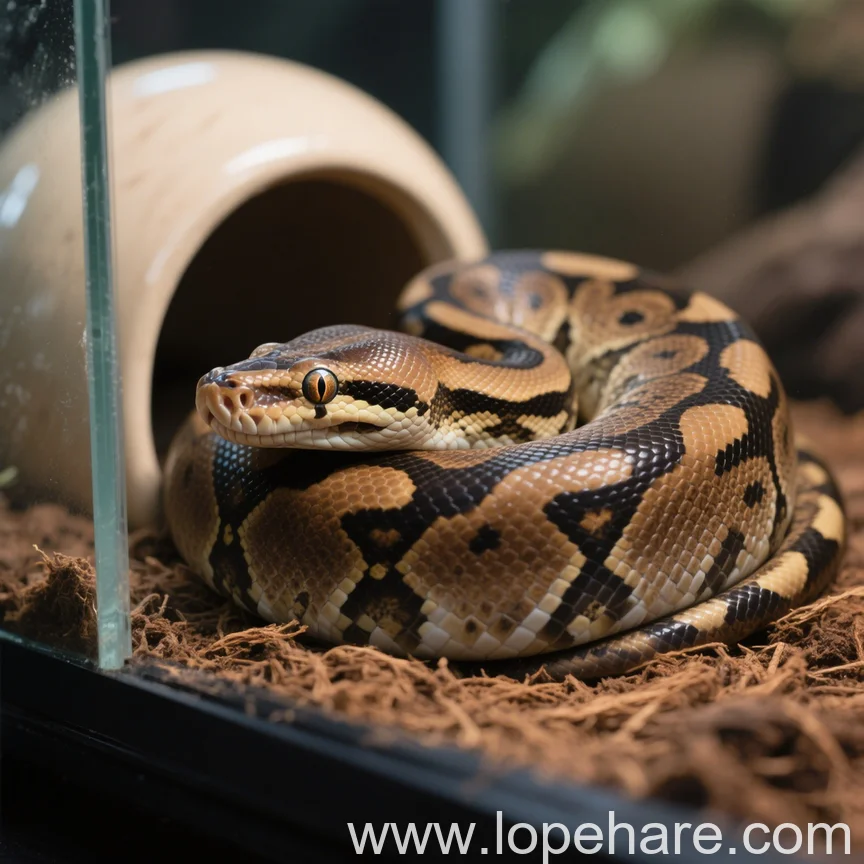
| Size/Weight | Feeding Frequency | Prey Size (Approx.) |
|---|---|---|
| Adult (~500g – 1.5kg) | Every 10-14 days | Small to Medium Rat (depending on snake size) |
| Large Adult (1.5kg+) | Every 14-21 days | Medium to Large Rat (ensure it’s not overly large) |
Again, observe your snake. If they are gaining too much weight or look obese (round, rolls appearing), increase the time between feedings. If they appear too thin and are otherwise healthy, you might slightly decrease the time between feedings or slightly increase prey size, but caution is advised to avoid overfeeding.
Common Feeding Issues
Ball Pythons are notorious for going off food. This can be frustrating, but it’s often normal behavior, especially for adults, or a sign that something in their environment is not quite right.
- Stress: Handling too often, an insecure enclosure, or changes in the environment can cause refusal to eat.
- Temperature/Humidity: Incorrect temps or humidity levels will impact their desire and ability to digest.
- Shedding: Snakes often refuse food when they are ‘in the blue’ (eyes turn opaque) or approaching a shed. Wait until after they have successfully shed.
- Breeding Season: Males, in particular, may go off feed for extended periods during breeding season (often fall/winter).
- Prey Size/Type: Sometimes simply offering a different size or type of rodent (mouse vs. rat) can encourage feeding.
- Illness: Persistent refusal, weight loss, or regurgitation (bringing the food back up) are signs that something is wrong and a visit to a reptile vet is needed.
Regurgitation is Serious: If your snake regurgitates its meal, it’s often a sign of stress, illness, or temperatures being too low for digestion. Do NOT attempt to feed them again for at least 10-14 days, and offer a *smaller* meal. If it happens again, consult a vet.
Ball Pythons can safely go for extended periods without eating, sometimes months, especially adults. As long as they maintain good body condition and are otherwise healthy, occasional feeding strikes are usually not cause for panic. Focus on maintaining optimal husbandry conditions.
Supplementation & Hydration
One benefit of feeding whole prey rodents is that they provide a nutritionally complete meal for a carnivorous snake. Unlike insectivorous reptiles, Ball Pythons eating appropriately sized, whole rodents typically do not require additional calcium or vitamin supplementation dusted onto their food. The rodent itself contains the necessary nutrients.
Hydration, however, is essential. Always provide a sturdy water bowl large enough for your Ball Python to soak in. Soaking can aid in shedding and helps maintain hydration. Ensure the water is fresh and clean.
Conclusion: Consistency is Key
Feeding your Ball Python on a consistent schedule with appropriately sized, frozen/thawed prey is fundamental to their health and longevity. While juveniles require weekly meals, adults can be fed less frequently, typically every 10-21 days. Understanding these differences and monitoring your individual snake’s needs are key to successful husbandry.
Don’t be discouraged by occasional feeding strikes; they are a normal part of owning this species. Focus on maintaining perfect temperatures, humidity, and providing a secure environment. By following these guidelines, you’ll ensure your Ball Python receives the proper nutrition it needs to thrive, allowing you to enjoy many years with this fascinating pet.
Reference: Based on information from the Ball python – Wikipedia article section on Diet.
